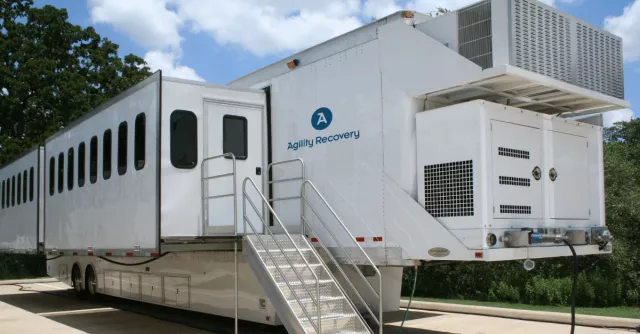Hurricane Season 2020 Outlook and How to Prepare Your Business

In this article, we'll talk about the link between rising temperatures and hurricane intensity, the current landscape, and how to prepare your business for an upcoming hurricane season.
The Hurricane Outlook for 2020
The National Oceanic and Atmospheric Administration (NOAA) expects an above-normal 2020 hurricane season. According to forecasters with NOAA’s Climate Prediction Center, a division of the National Weather Service, their outlook for 2020 foresees a 60% chance of an above-normal Atlantic hurricane season, which runs from June 1 through November 30.
NOAA predicts a range of 13 to 19 named storms (storms with winds of 39 mph or higher), of which six to 10 could become hurricanes (winds of 74 mph or higher), including three to six major hurricanes (category 3, 4, or 5; winds of 111 mph or higher).
The Link Between Rising Temperatures and Hurricane Intensity
One of the main reasons for the spike in 2020 hurricane activity and intensity can be attributed to global warming. For decades, meteorologists have been able to link hurricane intensity to elevated global temperatures.
Now the NOAA has provided even more compelling causal evidence by citing the findings of a recent study published in Proceedings of the National Academy of Sciences (PNAS). The study’s author, Jim Kossin of the National Centers for Environmental Information (NCEI), compiled more than 40 years of data. The results show a clear correlation between rising temperatures and hurricane intensity.
With 2020 likely to rank among the five warmest years on record, the U.S. is predicted to be hit hard by hurricanes in the coming months. Because hurricanes are the costliest U.S. weather and climate disasters, your business stands to lose big if it does not have a business continuity plan (BCP) that includes a comprehensive response to hurricanes.
Protect Your Business from Hurricanes
Hurricanes caused 47% of all business interruptions recovered by Agility in 2019.
With more than 30 years of experience in helping businesses prepare, respond, and recover from the impact of hurricanes, including Katrina, Sandy, and Dorian, we have developed helpful resources and best practices to incorporate into your Business Continuity Plans. See our Hurricane Season Preparedness Checklist for steps to take to prepare your business for hurricanes, or download our Hurricane Tabletop Exercise Template to test your emergency preparedness and business continuity plan.
Control the Impact a Disaster Has on Your Business
- People: People are your most important asset. Practice the plan, communicate regularly, and empathize with their personal situations.
- Property: Back-up and safely store all physical, financial, and inventory assets.
- Processes: Ensure all critical business processes are protected and can be applied in temporary environments.
- Products: Track and manage all inventory, keeping customers and suppliers informed, managing their expectations.
- Partners: Understand and confirm continuity plans with key partners and suppliers in advance.
Plan for Hurricane Season and COVID-19
Business continuity has moved to the forefront the past several months while businesses coped with the COVID-19 impact. It is important for businesses to actively consider how this hurricane season will have a different impact on their workforce and operations when many companies are still actively working through continuity of operations from the pandemic.
- Considerations for Businesses:
- What to do if your employees are working from home in the area of hurricane impact?
- Will your employees be able to continue work?
- How will you know if your employees are safe? How will you communicate with them and receive check-ins from them on any device?
- What to do if there is an evacuation?
- What if there is a power/internet outage?
- Does your office space backup plan allow for social distancing?
With the above-normal hurricane predictions alongside the ongoing pandemic, this could be a hurricane season unlike any other. Make sure you have updated your business continuity process and solutions to compensate for these recent market conditions.




